The annals of Scottish Freemasonry are replete with examples of families that have a long-running connection with the Craft.
This paper will focus on two members of a family that are notable for their contribution not only to Scottish Freemasonry, but to the wider community over a lengthy period of time.
The family in question is the Birrell family of Edinburgh, particularly: John Hamilton Birrell, and his son John Frederick Birrell.
Although unsung, and largely forgotten, they both made their mark on Scottish Freemasonry and in the fields of their chosen professions; and it can rightly be stated that theirs was a life well spent.
John Hamilton Birrell
John Hamilton Birrell was born in Broughty Ferry, Forfarshire, Scotland, on 9 January, 1879, and was educated at Gillespie’s School in the city before moving on to Edinburgh University where he was graduated M.A. in 1902.
He became a schoolteacher serving in a number of schools throughout the city.
His speciality was geography and he was awarded a doctorate by the university in 1927 for his thesis: ‘British post war trade with the British Commonwealth Nations, especially in its geographical aspects’. [1]
He also wrote several books including:
A Smaller Commercial Geography (1923);
Commercial Geography of the World Part Two;
The British Empire (1933).
He served his country in the First World War, and the Edinburgh University Roll of Honour for 1914-1919 records that he saw action in France and the Rhine from 1917 to January 1919, as an R.G.A. (Royal Garrison Artillery) Gunner in 1917 and a Lance-Bombardier from May 1918. [2]

One of John Hamilton Birrell’s books – via Amazon
IMAGE LINKED: Amazon Attribution 4.0 International (CC BY 4.0)
John Hamilton Birrell was initiated into Freemasonry in Lodge Dramatic and Arts, No. 757, on 7 November, 1916, eventually rising to the chair of the Lodge on 17 December, 1930.
In doing so, he succeeded two other very prominent Masons in the form of Brother W.S. Malloch and Brother Joseph Inglis.
Birrell was no less worthy a Mason and he took a keen interest in every aspect of the Craft.
His loyalty and devotion to his Lodge was rewarded when his brethren ‘unanimously and with acclamation’ awarded him with the high honour of ‘Distinguished Service Membership’.
He further rose to high office with the Grand Lodge of Scotland, and in 1938 was Grand Bard.
He was elected a member of Grand Committee in 1941, and this was followed by election to the office of Grand Librarian in 1947.
Indeed, Birrell was the first person to occupy the latter office, and appears to have executed that function with some aplomb.
His administrative skills ensured that the books in the library of Grand Lodge were catalogued properly; and he gained a reputation for being patient, friendly, and cooperative, toward students of Freemasonry. [3]

Seal of Lodge Dramatic No. 571
IMAGE CREDIT: Lodge Dramatic No. 571 https://lodge-dramatic-571.masonic-website.org/
Interestingly for the present writer, Birrell was Proxy Master of his Mother Lodge: Lodge St. Michael No. 38, Crieff in Perthshire in 1952.
It was common practice in those days for Lodges to have proxies appointed to represent them in Grand Lodge when brethren found travelling great distances impractical.
As an author of some repute, Birrell was ideally qualified to write the history of his Mother Lodge, and in 1938, on the occasion of the Lodge’s 50th anniversary, he produced: ‘History of Lodge Dramatic and Arts, No. 757 (1888-1938)’.

History of Lodge Dramatic and Arts, No. 757 (1888-1938)
IMAGE CREDIT: author’s collection
Birrell’s Masonic activities were not confined to the Craft, as in 1932, only a few years after his initiation, he was First Principal of Canongate Kilwinning Royal Arch Chapter No. 56, Edinburgh. [4]
Another Masonic-related society to which both father and son Birrell were closely associated was the Rosicrucian Society of Scotland, more commonly known by the Latin title Societas Rosicruciana in Scotia, or more simply by the acronym S.R.I.S.
This is a society which does not consider itself Masonic, and which is an autonomous body, free from interference from any other authority.
Nevertheless, membership is restricted to qualified Master Masons and is by invitation only.
The society was formed in 1873 by a charter from an identical English society known as Societas Rosicruciana in Anglia, or again, by the acronym S.R.I.A.
However, the English society received its charter from an earlier non-Masonic Rosicrucian society in Edinburgh.
The head of the Edinburgh society was a Freemason, as were many of its members, but no Masonic qualification was required to join it.
The head of this society was one Anthony Oneal Haye, who was titled ‘Magus Maximus’ as opposed to ‘Supreme Magus’ which was the title adopted by the head of the later societies.
Haye will be referred to again in this paper.
Birrell was admitted to the Metropolitan College S.R.I.S. Edinburgh, on 7 January 1921, and took a very active part in the work of the College.
His administrative talents clearly noted by this time, in 1924 he held the office of Librarian, and on 14 March that year he presented a talk on ‘The Fama Fraternitatis’. [5]
He rose to the chair of the College thus becoming Celebrant in 1929.
His work for the College and the Society was further recognised when he served as Junior Substitute Magus of S.R.I.S., from 1935 to 1938; and as Secretary-General from 1938 to 1946.
The pinnacle of his Rosicrucian career came when he served as Senior Substitute Magus between 1949 and 1950. [6]
John Hamilton Birrell died in 1952, and a fulsome and heartfelt tribute was paid to him in the Grand Lodge of Scotland Year Book of 1953, and no doubt elsewhere.
John Frederick Birrell

John Frederick Birrell –
IMAGE CREDIT: author’s collection
John Frederick Birrell, better known to family and friends as ‘Freddie’ was born in Edinburgh on 29 August, 1911.
His father of course was the aforementioned John Hamilton Birrell, but details of his mother are currently unknown, as is the question of whether or not he had any siblings.
The Edinburgh & Leith Post Office directory for 1940 to 1941 shows father and son residing at 51, Lauderdale Street, Edinburgh.
The only other Birrell in the street at that time is a Miss Birrell at number nine; but whether she is a relative or not is unknown.
It would appear that mother had perhaps predeceased her husband, and that if John junior did have any siblings, they had flown the parental nest.
John Frederick Birrell was educated at the private school, George Watson’s College, and at Edinburgh University where he was graduated MB, ChB. in 1934.
During the Second World War, Birrell served as a Lieutenant-Colonel in the Royal Army Medical Corps in North Africa and Italy. Like his father, he excelled in both his career and in Freemasonry.
He rose to become a consultant otolaryngologist (ear, nose and throat specialist) at the Royal Hospital for Sick Children, Edinburgh.
He specialised particularly in paediatric otolaryngology and it was said of him: ‘he was a big man who cared for the smallest of children’. [7]
The British Medical Directory for 1979 listed his medical qualifications as follows:
MD (Commendation) 1940, MB ChB 1934, University of Edinburgh.
Fellow of the Royal College of Surgeons of Edinburgh, 1937 (Edinburgh & Bordeaux).
Fellow of the Royal Society of Medicine (Ex-President, Otolaryngology Section)
Member of the Scottish Otolaryngological Society.
Late Aural Surgeon, Royal Edinburgh Hospital for Sick Children & City Hospital, Edinburgh; Lt Col, RAMC; Adviser in Otolaryngology to the War Office.
Author: ‘Ear, Nose & Throat Diseases of Children’ 1960
Editor: ‘Logan Turner’s Diseases of Nose, Throat & Ear’ 1977
Author: ‘Paediatric Otolaryngology’ 1978, etc. [8]
It will be noted that like his father, he was an author of some repute.
Indeed, although his medical career and Freemasonry were his greatest loves, writing was also very close to his heart, and he wrote on subjects professional and Masonic. Freddie’s life mirrored that of his father in a number of ways.
He was also a Past Master of Lodge Dramatic and Arts, No. 757, [9] and he too was an eminent member of Societas Rosicruciana in Scotia.
Freddie joined the Metropolitan College of the society on 1 November, 1935, and took the chair as Celebrant from 1950 to 1951.
He was Director General of Ceremonies from 1953 to 1956, and became Junior Substitute Magus of S.R.I.S. from 1956 to 1961, before attaining the pinnacle of his Rosicrucian career as Supreme Magus between 1961 and 1976. [10]
It was during his term as Supreme Magus that Birrell wrote what was probably his most important contribution to Masonic literature, when he researched and prepared a paper entitled: ‘The Origins of Scottish Rosicrucianism,’ which he presented at the General Assembly for the centenary celebrations of the S.R.I.S. held at Perth, on 5 May 1973.
This event was marked by the working of the aforementioned Anthony Oneal Haye’s Rosicrucian ritual of 1866.
In this paper Birrell provided a great deal of information, not only on the history of the S.R.I.S., but also much on the life and career of Anthony Oneal Haye himself; a sadly neglected subject.
The present writer was greatly appreciative of this information when researching and writing his own biography of Haye, and it assisted him in tracing the minute of Haye’s initiation into Lodge Canongate Kilwinning, No. 2, Edinburgh, in 1859. [11]

The Order of the Monks of St Giles – members not identified –
IMAGE CREDIT: author’s collection
‘Freddie’ was also a member of another Order, this time not a Masonic Order, but a rather quaint almost eccentric one which also had its headquarters in Edinburgh.
This is an Order known as the ‘Monks of St. Giles’. The Order was founded on 1 January, 1852.
It is one of the oldest societies in Edinburgh and was originally founded for the purpose of social harmony and enjoyment by: ‘singing, joking, punning, speaking, etc.’
The Order appears to be presided over by a ‘Prior’ and ‘Sub-Prior’, and it was originally their responsibility to ‘sing or chaunt an original song or poetical composition’.
However, this later changed so that almost every member was expected to make their contribution.
Each member was known by his ‘monkish name’, and Birrell was known as Father Vertigo. [12]
As with every endeavour he undertook in his professional and private life, Birrell thoroughly gave of himself in this Order.

The Order of the Monks of St Giles – members not identified –
IMAGE CREDIT: author’s collection
In 1991, he contributed a short poem entitled ‘Tunnel Vision’, which he wrote in French; yet another indication of his talent and versatility.
The poem is reproduced here:
Je susis un vieux francais moine
Eit dans un journal
Que mon pays est sur le point
De renouer l’Entente Cordiale.Il va construire chemin de fer
Qui passe au-dessous de la Manche
Jusqu’il arrive en Angleterre
Et s’eleve sur la Dover planche.Mon pays espere que je pourrais
Convenir à certains points de vue
Mais je n’aime pas les sales Anglais
J’aime les Ecossais, moi, et vous ?Et j’espere si le tunnel vient
Je porrais visiter les iles
Et voir mes amis, eh bien,
Les membres des Moines de St. Giles. [13]
A literal translation of the poem is:
I am an old French monk
I have read in the paper
My country is about to renew
The Entente Cordiale.A railway line they want to build.
Underneath the channel
All the way to England
To land upon the Dover shore.My country wishes I would join
A certain point of view
But I do not like the vile English
And prefer the Scots…how about you?I hope that when the tunnel is built
That I can visit the islands
And visit my chums, and hey,
The Monks of St Giles. [14]
In its original rhyming couplets form it may also translate as follows:
An elderly French monk am I
And in the paper, I have read
My country is quite keen to push
The Entente Cordiale ahead.A railway line they do intend
Beneath the Channel
It would drive To England,
On the Dover shore is where they hope it will arrive.They wish that I would show support
And come round to their point of view
But I don’t like those English twits!
I much prefer the Scots…don’t you?But when the tunnel is all built
I’ll take a journey to those Isles
I’ll travel up the road to see my chums,
The Monks of old St. Giles. [15]
The members list of the Monks of St. Giles is effectively a roll call of the great and the good of Edinburgh, and many other notable Masonic names are on the roll, including: Joseph Inglis, another Supreme Magus of S.R.I.S, (Father Fidelis); Robert S. Lindsay (Father Aladdin); and Professor George Stodart Blackie, (Father Tennessee).
John William Brodie-Innes, the famous 19th century occultist and member of the Hermetic Order of the Golden Dawn (an organisation founded by members of S.R.I.A) was also a Monk (Father Innocent). [16]

Image of a chair used by the Order of the Monks of St Giles.
IMAGE CREDIT: Reproduced by kind permission of the Facebook Group – ‘Edinburgh’s Secret Clubs’ – all rights reserved https://www.facebook.com/Edinburghs-Secret-Clubs-215071801905650

The Order of the Monks of St Giles – members not identified –
IMAGE CREDIT: author’s collection
Another great passion for ‘Freddie’ was golf, although it seems that his ability in that sphere was not quite as prodigious as it was in others.
In his later years, Freddie devoted much of his life to caring for his wife whose health had deteriorated, as well as serving his church in which he was an elder for forty-five years, and session-clerk for ten years. [17]

An Edinburgh Alphabet
IMAGE CREDIT: author’s collection
As indicated earlier, Freddie Birrell was an accomplished author, and one of his great contributions to Scottish literature was his book, An Edinburgh Alphabet, which was published in 1980.
As the title implies the book is an A-Z of the many interesting and historical sites in he and his father’s beloved city of Edinburgh.
Given his father’s expertise in geography, it comes as no surprise to learn that Freddie produced the book largely from research carried out by his father years earlier, to which he added his own unique contribution.
He acknowledged the debt to his father in the preface:
This is not my book, it is not even my idea. The notes for it were collected initially by my father during World War Two, and were added to in manuscript jottings until his death over 25 years ago.
These proved a useful source of reference when topics arose during conversation with family and friends, but my lack of historical, antiquarian, and architectural knowledge, and, worse, lack of interest, meant that I did not add much to them after my father’s death.
Since my retiral they have stimulated me to read widely and to investigate on foot the remains of the old town and the changes effected in the new town. [18]
John Frederick Birrell died on 17 June 1994. Between them, father and son Birrell contributed hugely to the education and well-being of society.
They promoted and practiced the liberal arts and sciences to their fullest extent, within their respective spheres of influence, and both men deserve to be remembered.
Footnotes
References
[1] Personal correspondence with Sally Pagan, Curational Assistant, University of Edinburgh.
[2] The Military Archive, ‘Edinburgh University Roll of Honour 1914-1919’.
[3] The Grand Lodge of Scotland Year Book, obituary for John Hamilton Birrell, (1953), 135.
[4] The Edinburgh & Leith Post Office Annual Directory, 1932/33, 1674.
[5] Frater J. Mason Allan VIْ, Metropolitan College-1873-1923- A Brief History of the College and its Antecedents, (Societas Rosicruciana in Scotia- S.R.I.S 1924) 26, 29.
[6] The Societas Rosicruciana in Scotia, (S.R.I.S.) membership records.
[7] British Medical Journal, (BMJ) obituary for J.F. Birrell, 22nd October 1994, Courtesy, the Royal College of Physicians and Surgeons of Glasgow.
[8] British Medical Directory, J.F. Birrell’s medical qualifications, Courtesy, the Royal College of Physicians and Surgeons of Glasgow. (1979).
[9] The Celtic Lodge, Edinburgh and Leith No. 291, Extract from Minutes 1950-1961, there are several references in the Minutes to Bro. Dr. J.F. Birrell, Past Master of Lodge Dramatic and Arts, No. 757 being in attendance.
[10] SRIS, membership records.
[11] J.F. Birrell, The Origins of Scottish Rosicrucianism, in The Origins of the Rosicrucian Society of England, ed. Darcy Kuntz, (Golden Dawn Research Trust, U.S.A. 2009), 23-40.
[12] ‘Verse of the Monks of St. Giles’ (published privately in Edinburgh 2002) preface, 182; BMJ, J.F. Birrell obituary.
[13] ‘Verse of the Monks of St. Giles’ (2002) 47.
[14] The author is grateful to Brother Jonathan Hill, Past Master, Lodge Allan Wilson, No. 851, Fortrose, Ross & Cromarty, for these translations.
[15] Ibid.
[16] ‘Verse of the Monks of St. Giles’ (2002), 185-188.
[17] BMJ, J.F. Birrell obituary.
[18] J.F. Birrell, ‘An Edinburgh Alphabet’, (James Thin, The Mercat Press, Edinburgh, 1980), 5.
Website Links
Facebook Group – ‘Edinburgh’s Secret Clubs’ – https://www.facebook.com/Edinburghs-Secret-Clubs-215071801905650
Lodge Dramatic No. 571 https://lodge-dramatic-571.masonic-website.org/
One of John Hamilton Birrell’s books – via Amazon –
Article by: Kenneth C. Jack
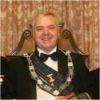
Kenneth C. Jack FPS is an enthusiastic Masonic researcher/writer from Highland Perthshire in Scotland.
He is Past Master of a Craft Lodge, Past First Principal of a Royal Arch Chapter, Past Most-Wise Sovereign of a Sovereign Chapter of Princes Rose Croix.
He has been extensively published in various Masonic periodicals throughout the world including: The Ashlar, The Square, The Scottish Rite Journal, Masonic Magazine, Philalethes Journal, and the annual transactions of various Masonic bodies.
Kenneth is a Fellow of the Philalethes Society, a highly prestigious Masonic research body based in the USA.
Recent Articles: Kenneth C. Jack
 Observations on the History of Masonic Research Archaeology is often associated with uncovering ancient tombs and fossilized remains, but it goes beyond that. In a Masonic context, archaeology can be used to study and analyze the material culture of Freemasonry, providing insight into its history and development. This article will explore the emergence and evolution of Masonic research, shedding light on the challenges faced by this ancient society in the modern world. |
 Anthony O'Neal Haye – Freemason, Poet, Author and Magus Discover the untold story of Anthony O’Neal Haye, a revered Scottish Freemason and Poet Laureate of Lodge Canongate Kilwinning No. 2 in Edinburgh. Beyond his Masonic achievements, Haye was a prolific author, delving deep into the history of the Knights Templar and leaving an indelible mark on Scottish Freemasonry. Dive into the life of a man who, despite his humble beginnings, rose to prominence in both Masonic and literary circles, leaving a legacy that continues to inspire. |
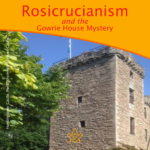 Rosicrucianism and the Gowrie House Mystery Unearth the mystifying intersections of Rosicrucianism and the infamous Gowrie House Mystery. Dive into speculative claims of sacred knowledge, royal theft, and a Masonic conspiracy, harking back to a fateful day in 1600. As we delve into this enthralling enigma, we challenge everything you thought you knew about this historical thriller. A paper by Kenneth Jack |
 Thomas Telford's Masonic Bridge of Dunkeld Of course, there is no such thing as a ‘Masonic Bridge’; but if any bridge is deserving of such an epithet, then the Bridge of Dunkeld is surely it. Designed by Scotsman Thomas Telford, one of the most famous Freemasons in history. |
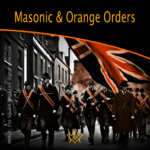 The masonic and orange orders: fraternal twins or public misperception? “Who’s the Mason in the black?” |
 Kenneth Jack's research reveals James Murray, 2nd Duke of Atholl – the 'lost Grand Master' |
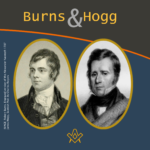 An Oration delivered to the Annual Burns and Hogg Festival, at Lodge Canongate Kilwinning, No. 2, Edinburgh, on 24 January 2018. By Bro. Kenneth C. Jack, FSAScot FPS, Past Master, Lodge St. Andrew, No. 814, Pitlochry. |
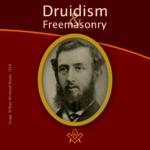 William Winwood Reade was a Scottish philosopher, historian, anthropologist, and explorer born in Crieff, Perthshire, Scotland. The following article by Kenneth Jack, provides some hints that William may have been a Freemason, but there is presently no definitive evidence he was. |
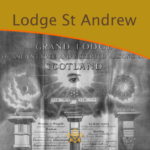 What's in a name? A brief history of the first Scottish Lodge in Australia - By Brother Kenneth C. Jack, Past Master, Lodge St. Andrew, No. 814, Pitlochry |
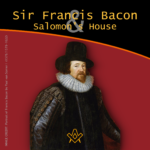 Sir Francis Bacon and Salomon’s House Does Sir Francis Bacon's book "The New Atlantis" indicate that he was a Rosicrucian, and most likely a Freemason too? Article by Kenneth Jack |
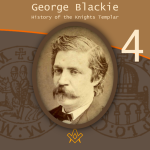 George Blackie – The History of the Knights Templar P.4 The final part in the serialisation of George Blackie's 'History of the Knights Templar and the Sublime Teachings of the Order' transcribed by Kenneth Jack. |
 George Blackie – The History of the Knights Templar P.3 Third part in the serialisation of George Blackie's 'History of the Knights Templar and the Sublime Teachings of the Order' transcribed by Kenneth Jack. |
 George Blackie – The History of the Knights Templar P.2 Second part in the serialisation of George Blackie's 'History of the Knights Templar and the Sublime Teachings of the Order' transcribed by Kenneth Jack. |
 George Blackie – The History of the Knights Templar P.1 First part in the serialisation of George Blackie's History of the Knights Templar and the Sublime Teachings of the Order – by Kenneth Jack |
 Little known as a Freemason, Bro Dr Robert ‘The Bulldog’ Irvine remains a Scottish rugby legend, and his feat of appearing in 10 consecutive international matches against England has only been surpassed once in 140 years by Sandy Carmichael. |
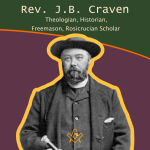 Rev. J.B. Craven: Theologian, Historian, Freemason, And Rosicrucian Scholar Archdeacon James Brown Craven is one of those unsung heroes of Scottish Freemasonry about whom very little has been previously written – here Kenneth Jack explores the life and works of this remarkable esoteric Christian. |
 Discover the powerful family of William Schaw, known as the 'Father of Freemasonry' |
 This month, Kenneth Jack invites us to look at the life of Sir William Peck; - astronomer, Freemason and inventor of the world's first electric car. A truly fascinating life story. |
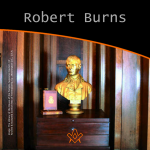 A Tribute to Scotland's Bard – The William Robertson Smith Collection With Burns' Night approaching, we pay tribute to Scotland's most famous Bard – The William Robertson Smith Collection |
 The Joy of Masonic Book Collecting Book purchasing and collecting is a great joy in its own right, but when a little extra something reveals itself on purchase; particularly with regards to older, rarer titles.. |
 Masons, Magus', and Monks of St Giles - who were the Birrell family of Scottish Freemasonry? |
 The 6th Duke of Atholl - Chieftain, Grand Master, and a Memorial to Remember In 1865, why did over 500 Scottish Freemasons climb a hill in Perthshire carrying working tools, corn, oil and wine? Author Kenneth Jack retraces their steps, and reveals all. |
 Charles Mackay: Freemason, Journalist, Writer Kenneth Jack looks at life of Bro Charles Mackay: Freemason, Journalist, Writer, Poet; and Author of ‘Tubal Cain’. |
 A Mother Lodge and a Connection Uncovered, a claim that Sir Robert Moray was the first speculative Freemason to be initiated on English soil. |
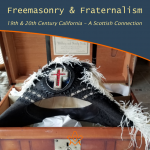 What is it that connects a very old, well-known Crieff family, with a former President of the United States of America? |
 The life of Bro. Cattanach, a theosophist occultist and Scottish Freemason |
 The Mysterious Walled Garden of Edzell Castle Explore the mysterious walled garden steeped in Freemasonry, Rosicrucianism, and Hermeticism. |
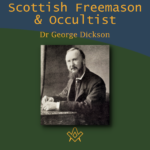 Dr. George Dickson: Scottish Freemason and Occultist Bro. Kenneth explores the life of Dr George Dickson a Scottish Freemason and Occultist |
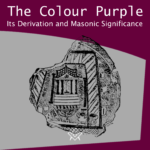 The Colour Purple - Its Derivation and Masonic Significance What is the colour purple with regards to Freemasonry? The colour is certainly significant within the Royal Arch series of degrees being emblematical of Union. |
 Bridging the Mainstream and the Fringe Edward MacBean bridging mainstream Freemasonry with the fringe esoteric branches of Freemasonry |
 Freemasonry in the Works of John Steinbeck We examine Freemasonry in the Works of John Steinbeck |
 Renegade Scottish Freemason - John Crombie Who was John Crombie and why was he a 'renegade'? |
 Scottish Witchcraft And The Third Degree How is Witchcraft connected to the Scottish Third Degree |
masonic knowledge
to be a better citizen of the world
share the square with two brothers

click image to open email app on mobile device








